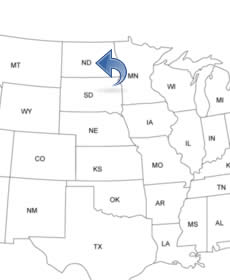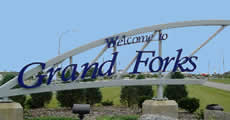NORTH DAKOTA PEOPLE SEARCH!
- ✔ Contact Info
- ✔ Phone Numbers
- ✔ Criminal Records
- ✔ Income Info
- ✔ Neighbors
- ✔ People's Age
- ✔ Property Ownership
- ✔ And Much More
Grand Forks, North Dakota
Grand Forks is located in the eastern part and is the third largest city in the U.S. State of North Dakota. Grand Forks is perhaps best known for the disastrous flood of 1997 and for the country music singer Lynn Anderson. Grand Forks has one of the lowest unemployment rates in the nation and is listed as one of the top communities to live in. It is also one of the most secure US places to live in.
To See And To Do In Grand Forks
- The North Dakota Museum Of Art
- Fishing
- Golf
- Ralph Engelstad Arena
- The Chester Fritz Auditorium
- The Empire Arts Center
- The Myra Museum
- The Greater Grand Forks Greenway
History Of Grand Forks - Timeline
In 1734, Les Grandes Fourches (Grand Forks) was selected as a rendezvous point for French fur trappers and many stayed for farming. In 1800, also British fur traders built a temporary camp at Les Grandes Fourches and in 1801, John Cameron built a trading post.
In 1808, a permanent post was established. Furs and trade goods passed through Grand Forks on oxcarts. The route was between Winnipeg, Canada, and St. Paul, Minnesota. In 1859, steamboats replaced oxcarts. In 1868, the Post Office was built by Sanford Cady, who was appointed the first Postmaster of Grand Forks in 1870.
In 1870, a steamboat froze in the river. Captain Alexander Griggs and his men were forced to remain in Grand Forks for the rest of the winter. Alexander Griggs decided that Grand Forks would be a good spot for a town. The land he settled, in what is now downtown, became the nine-acre townsite.
In 1875, the town's first newspaper, The Plaindealer, started. In 1879, Alexander Griggs built a pontoon toll bridge and in 1881 the city of Grand Forks was officially incorporated. In 1880, the railroad reached Grand Forks. In 1881, Grand Forks was incorporated as a city and Central School opened the same year.
In 1882, a fire destroyed a large portion of Grand Forks. In 1883, the University of North Dakota was founded and the Diamond Milling Company of Grand Forks also started.
In 1904, a commercial streetcar line was operating in Grand Forks. In 1922, the North Dakota Mill and Elevator Association started. It is the largest flour mill in the United States. In 1955, the Grand Forks Air Force Base was established and in 1960, the base was completed.
In 1997, a severe flood caused damage Grand Forks and in downtown, a fire destroyed eleven buildings. 60 percent of the city was covered with water and most residents were forced to abandon the city. More than 850 homes and businesses were acquired by the City in an effort to floodproof the community.

